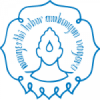Key word : Hedgerows conservations technology, land degradation, surface runoff
coefisien, Solo Hulu Sub-Watershed
By: Jaka Suyana and Endang Setia Muliawati
Land degradation and flood hazard increases during rainy season, and drought in dry season are the problems that will challenge Indonesian people in the future but already have been beginning associated with watershed system damage. Land Degradation that promoted by erosion at Solo Hulu sub-watershed contributed negative effects at on-site and off-site area.
The results show that the research site consists of 61 land units, with land degradation level of medium, high and low of 5,692.21 ha (43.4%), 2,983.01 ha (22.7%) and 4,442.35 ha (33.9%), respectively.
Erosion experiment plot of dry land with latosol soil type with 30-70% slope showed that the treatment of inhabitants forest (TTd-4) decreased surface run-off and erosion for 40.79% and 83.64%, respectively, compared to traditional terrace alone (TTd-0). Then, treatment of traditional terrace + Jali (Coix lacryma-jobi L.) strip near terrace lip + 7 t/ha Zeamays stem mulch (TTd-2) decreased surface runoff and erosion for 16.31% and 46.06%, respectively, than that of Ttd-0. Treatment of traditional terrace + Akar wangi (Vetiveria zizanioides, Linn Nash) strip near terrace lip + 7 t/ha Zeamays stem mulch (TTd-1) decreased surface runoff and erosion for 11.38% and 42.47%, respectively, than that of Ttd-0. Meanwhile, compared to Ttd-0, treatment of traditional terrace + Setaria spacelata strip near terrace lip + 7 t/ha Zeamays stem mulch (TTd-3) decreased surface runoff and erosion for 10.19% and 41.74%, respectively.

